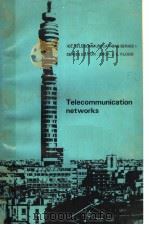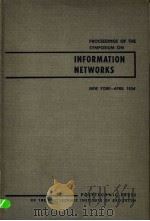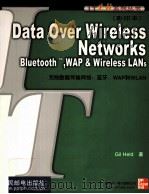《data networks P486》
| 作者 | 编者 |
|---|---|
| 出版 | 未查询到或未知 |
| 参考页数 | |
| 出版时间 | 没有确切时间的资料 目录预览 |
| ISBN号 | 无 — 求助条款 |
| PDF编号 | 820555858(仅供预览,未存储实际文件) |
| 求助格式 | 扫描PDF(若分多册发行,每次仅能受理1册) |
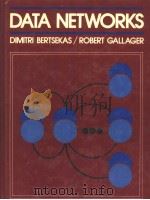
Chapter 1INTRODUCTION AND LAYERED NETWORKARCHITECTURE1
1.1Historical Overview,1
1.1.1 Technological and Economic Background,4
1.1.2 Communication Technology,5
1.1.3 Applications of Data Networks,6
1.2Messages and Switching,8
1.2.1 Messages and Packets,8
1.2.2 Sessions,9
1.2.3 Circuit Switching and Store and Forward Switching,11
1.3Layering,14
1.3.1 The Physical Layer,17
1.3.2 The Data Link Control (DLC) Layer,20
1.3.3 The Network Layer,22
1.3.4 The Transport Layer,24
1.3.5 The Session Layer,25
1.3.6 The Presentation Layer,25
1.3.7 The Application Layer,26
1.4 A Simple Distributed Algorithm Problem,26
1.5 Notes and Suggested Reading,29
Chapter 2DATA LINK CONTROL AND COMMUNICATIONCHANNELS31
2.1 Overview,31
2.2The Physical Layer: Channels and Modems,34
2.2.1 Filtering,35
2.2.2 Frequency Response,37
2.2.3 The Sampling Theorem,40
2.2.4 Bandpass Channels,42
2.2.5 Modulation,43
2.2.6 Frequency- and Time-Division Multiplexing,47
2.2.7 Other Channel Impairments,48
2.2.8 Digital Channels,48
2.2.9 Propagation Media for Physical Channels,49
2.3Error Detection,50
2.3.1 Single Parity Checks,50
2.3.2 Horizontal and Vertical Parity Checks,51
2.3.3 Parity Check Codes,52
2.3.4 Cyclic Redundancy Checks,54
2.4ARQ—Retransmission Strategies58
2.4.1 Stop-and-Wait ARQ,59
2.4.2 ARPANET ARQ,62
2.4.3Go Back n ARQ,63
Rules Followed by Sending DLC,66
Rules Followed by Receiving DLC,67
Go Back n with Modulus m > n,68
Efficiency of Go Back n Implementations,70
2.4.4 Selective Repeat ARQ,71
2.5Framing,73
2.5.1 Character-Based Framing,75
2.5.2 Bit-Oriented Framing—Flags,76
2.5.3 Length Fields,79
2.5.4 Framing with Errors,80
2.5.5 Maximum Frame Size,82
2.6 Standard DLCs,85
2.7Session Identification and Addressing,91
2.7.1 Session Identification in TYMNET,92
2.7.2 Session Identification in the Codex Networks,94
2.8Error Recovery at the Network and Transport Layer,95
2.8.1 End-to-End acks, Flow Control, and Permits,96
2.8.2 Using End-to-End acks for Error Recovery,98
2.8.3 The X.25 Network Laver Standard99
2.9 Summary,101
2.10 Notes, Sources, and Suggested Reading,102
PROBLEMS,103
Chapter 3DELAY MODELS IN DATA NETWORKS111
3.1Introduction,111
3.1.1 Multiplexing of Traffic on a Communication Link,112
3.2 Queueing Models—Little’s Theorem,114
3.3TheM/M/I Queueing System,122
3.3.1 Main Results、124
3.3.2 Occupancy Distribution Upon Arrival,132
3.3.3 Occupancy Distribution Upon Departure,134
3.4TheM/M/m, M/M/x and M/M/m/m Systems,134
3.4.1 M/M/m: The m-Server Case,135
3.4.2 M/M/∞: Infinite-Server Case,138
3.4.3 M/M/m/m: The m-Server Loss System,140
3.5The M/G/1 System,140
3.5.1 M/G/1 Queues with Vacations,147
3.5.2Reservations and Polling,150
Single-User System,152
Multiuser System,154
Limited Service Systems,157
3.5.3Priority Queueing,159
Nonpreemptive Priority,159
Preemptive Resume Priority,161
3.6 Networks of Transmission Lines,163
3.7 Time Reversibility—Burke’s Theorem,167
3.8 Networks of Queues—Jackson’s Theorem,174
3.9 Summary,180
3.10 Notes, Sources, and Suggested Reading,180
PROBLEMS,182
APPENDIX A:Review of Markov Chain Theory,194
3.A.1 Discrete-Time Markov Chains,194
3.A.2 Detailed Balance Equations,196
3.A.3 Partial Balance Equations,197
3.A.4 Continuous-Time Markov Chains,197
APPENDIX B: Summary of Results,199
Chapter 4MULTIACCESS COMMUNICATION205
4.1Introduction,205
4.1.1 Satellite Channels,207
4.1.2 Multidrop Telephone Lines,208
4.1.3 Multitapped Bus,208
4.1.4 Packet Radio Networks,209
4.2Slotted Multiaccess andi the Aloha System,209
4.2.1Idealized Slotted Multiaccess Model,209
Discussion of Assumptions,210
4.2.2 Slotted Aloha,211
4.2.3Stabilized Slotted Aloha,216
Stability andi Maximum Throughput216
Pseudo- Bavesian Algorithm,217
Approximate Delay Analysis,219
Binary Exponential Backoff,221
4.2.4 Unslotted Aloha222
4.3Splitting Algorithms,224
4.3.1Tree Algorithms,225
Improvements to the Tree Algorithm227
Variants of the Tree Algorithm,229
4.3.2First-Come First-Serve Splitting Algorithms,229
Analysis of FCFS Splitting Algorithm,233
Improvements in the FCFS Splitting Algorithm,237
Practical Details,238
The Last-Come First-Serve (LCFS) Splitting Algorithm238
Delayed Feedback,240
Round Robin Splitting,240
4.4Carrier Sensing,240
4.4.1 CSMA Slotted Aloha,241
4.4.2 Pseudo-Bayesian Stabilization for CSMA Aloha,244
4.4.3 CSMA Unslotted Aloha,246
4.4.4 FCFS Splitting Algorithm for CSMA,247
4.5Multiaccess Reservations,249
4.5.1 Satellite Reservation Svstems,250
4.5.2Local Area Networks: CSMA/CD and Ethernet,254
Slotted CSMA/CD,255
Unslotted CSMA/CD,256
The IEEE 802 Standards,257
4.5.3Local Area Networks: Token Rings,258
IEEE 802.5 Token Ring Standard,261
Expected Delay for Token Rings,262
Slotted Rings and Register Insertion Rings,263
4.5.4Local Area Networks: Token Buses and Polling,265
IEEE 802.4 Token Bus Standard,266
Implicit Tokens: CSMA/CA,267
4.5.5Higher-Speed Local Area Networks,267
Expressnet,269
Homenets,270
4.5.6 Generalized Polling and Splitting Algorithms,272
4.6Packet Radio Networks,274
4.6.1 TDM for Packet Radio Nets,276
4.6.2 Collision Resolution for Packet Radio Nets,277
4.6.3 Transmission Radii for Packet Radio,280
4.6.4 Carrier Sensing and Busy Tones,281
4.7 Summary,282
4.8 Notes, Sources, and Suggested Reading,283
PROBLEMS,283
Chapter 5ROUTING IN DATA NETWORKS297
5.1Introduction,297
5.1.1 Main Issues in Routing,299
5.1.2An Overview of Routing in Practice,302
Routing in the ARPANET,303
Routing in the TYMNET,305
Routing in SNA,307
5.2Network Algorithms and Shortest Path Routing,308
5.2.1 Undirected Graphs,308
5.2.2 Minimum Weight Spanning Trees,312
5.2.3Shortest Path Algorithms,315
The Bell man-Ford Algorithm,318
Dijkstra’s Algorithm,322
The Flovd-Warshall Algorithm,323
5.2.4 Distributed Asynchronous Bellman-Ford Algorithm,325
5.2.5Adaptive Routing Based on Shortest Paths,333
Stability Issues in Datagram Networks,333
Stability Issues in Virtual Circuit Networks,336
5.3Broadcasting Routing Information—Coping with Link Failures,340
5.3.1 Flooding—The ARPANET Algorithm,343
5.3.2 Flooding without Periodic Updates,345
5.3.3 Topology Broadcast without Sequence Numbers,347
5.4Flow Models, Optimal Routing, and Topological Design,355
5.4.1 An Overview of Topological Design Problems,360
5.4.2The Subnet Design Problem,362
Capacity Assignmnent Problem,362
Heurisric Methods for Capacity Assignment,364
Network Reliability Issues,367
Spanning Tree Topology Design,370
5.4.3 The Local Access Network Design Problem,371
5.5 Characterization of Optimal Routing,374
5.6Feasible Direction Methods for Optimal Routing,382
5.6.1 The Frank-Wolfe (Flow Deviation) Method,385
5.7Projection Methods for Optimal Routing,392
Unconstrained Nonlinear Optimization,392
Nonlinear Optimization Over the Positive Orthant,394
Application to Optimal Routing,396
5.8 Routing in the Codex Network,403
5.9 Summary,405
5.10Notes, Sources, and Suggested Reading,406
PROBLEMS,407
Chapter 6FLOW CONTROL423
6.1Introduction,423
6.1.1 Main Objectives of Flow Control,424
Keeping Delay Small within the Subnet,424
Fairness,425
Buffer Overflow,427
6.2Window Flow Control,429
6.2.1End-to-End Windows,430
Limitations of End-to-End Windows,432
6.2.2 Node-by-Node Windows for Virtual Circuits,435
6.2.3 The Isarithmic Method437
6.2.4 Window Flow Control at the User Level,438
6.3Overview of Flow Control in Practice,439
Flow Control in the ARPANE T,439
Flow Conuol in the T YM NET,440
Flow Control in SNA,440
Flow Control in the Codex Network441
Flow Control in X.25,442
6.4Flow Control Schemes Based on Input Rate Adjustment,442
6.4.1 Combined Optimal Routing aud Flow Control,443
6.4.2 Max-Min Flow Control,448
6.4.3 Implementation of Input Rates in a Dvnamic Environment,453
6.5 Smmnary,455
6.6 Notes, Sources, and Suggested Reading,455
PROBLEMS,456
REFERENCES463
INDEX477
《data networks P486》由于是年代较久的资料都绝版了,几乎不可能购买到实物。如果大家为了学习确实需要,可向博主求助其电子版PDF文件。对合法合规的求助,我会当即受理并将下载地址发送给你。
高度相关资料
-
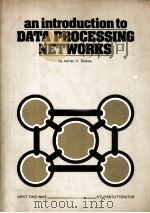
- AN INTRODUCTION TO DATA PROCESSING NETWORKS
- Langton Information Systems Ltd
-
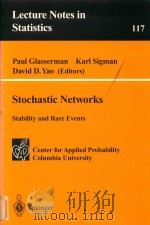
- Stochastic Networks
- 1996 Springer New York
-
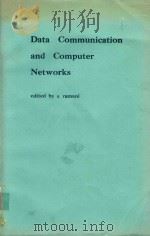
- DATA COMMUNICATION AND COMPUTER NETWORKS
- 1981 NORTH-HOLLAND PUBLISHING COMPANY
-

- Nonlinear networks
- 1977 Elsevier Scientific Pub. Co.
-
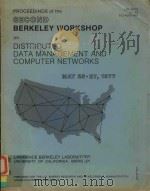
- PROCEEDINGS OF THE SECOND BERKELEY WORKSHOP ON DISTRIDUTED DATA MANAGEMENT AND COMPUTER NETWORKS 197
- 1977 U.S.DEPARTMENT OF COMMERCE
-
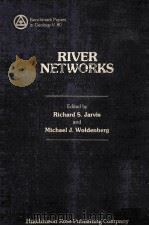
- River networks
- 1984 Hutchinson Ross Publishi
-

- NETWORKS
- 1977
-

- A REVIEW OF THE DESIGN OF WATER RESOURCES DATA NETWORKS
- 1980 AUSTRALIAN GOVERNMENT PUBLISHING SERVICE
-
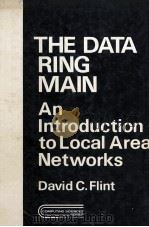
- THE DATA RING MAIN An Introduction to Local Area Networks
- 1983 Wiley Heyden Ltd
提示:百度云已更名为百度网盘(百度盘),天翼云盘、微盘下载地址……暂未提供。➥ PDF文字可复制化或转WORD


